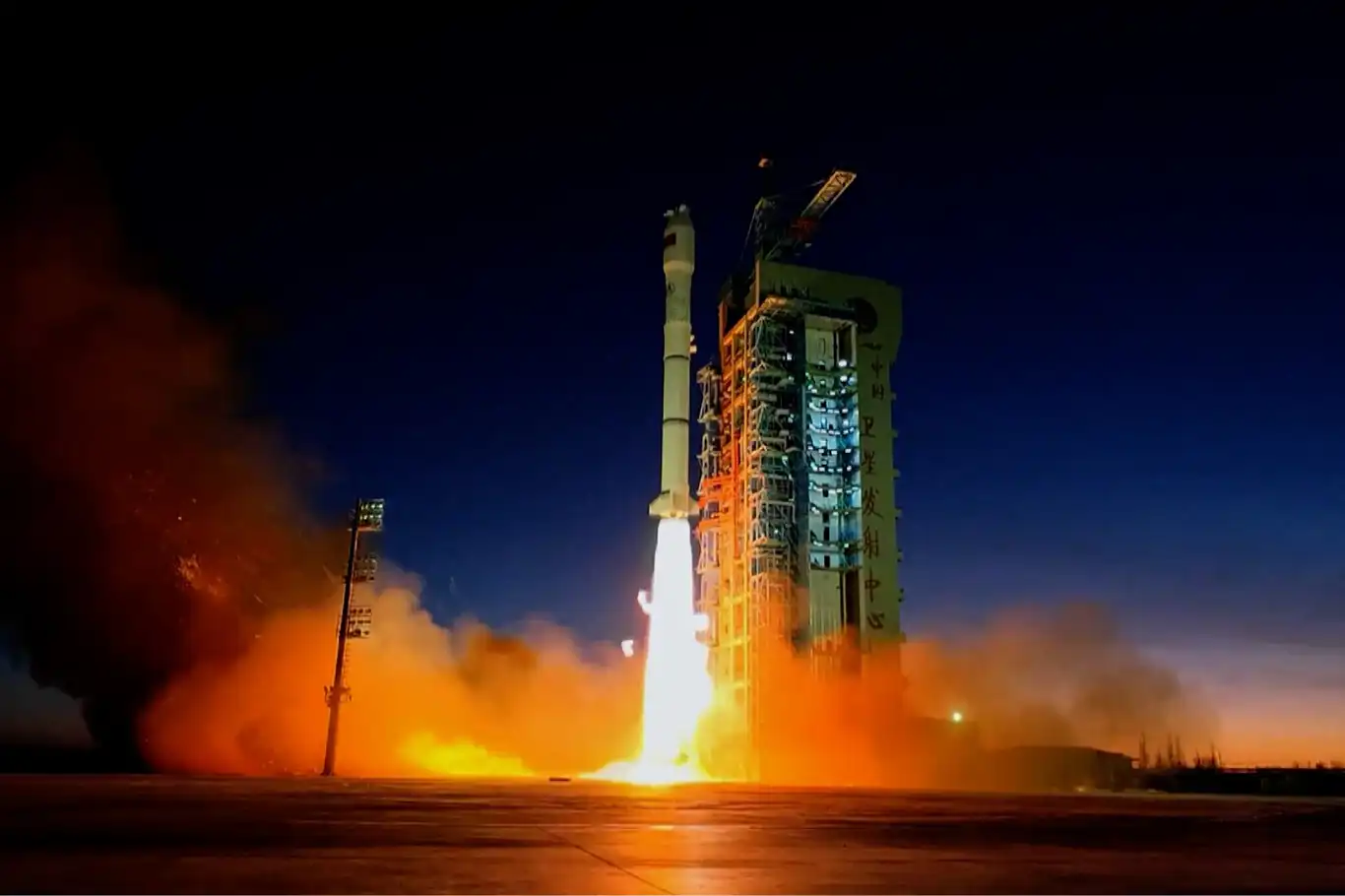China conducts successful launch of internet technology test satellites


China marked a milestone in its space program early Tuesday with the successful launch of a new set of internet technology test satellites from the Jiuquan Satellite Launch Center in the Gobi Desert.
A Long March 2D rocket lifted off at 12:00 a.m. local time (0400 UTC), carrying what officials described as a cutting-edge payload designed to advance direct-to-cell broadband and space-ground network integration.
The Shanghai Academy of Spaceflight Technology (SAST), which oversaw the mission, confirmed its success. The Chinese Ministry of Industry and Information Technology (MIIT) later clarified that the launch deployed four test satellites, labeled 0001-0004, equipped with Ka-band and other frequency technologies. Commercial firms Changguang Satellite Technology and Galaxy Space each contributed two satellites, though specifics about their design remain under wraps.
This launch, the sixth in China’s satellite internet test series since July 2023, is part of a broader effort to refine propulsion, power, thermal control, and phased array antenna systems, according to analysts. It aligns with China’s ambitious plans for two low Earth orbit (LEO) megaconstellations—Guowang and Thousand Sails (Qianfan)—and other high-orbit internet projects, signaling a potential leap in the nation’s space-based communications capabilities.
Since designating satellite internet a national priority in 2020, China has integrated it into its infrastructure strategy, complementing its medium Earth orbit (MEO) and geostationary satellites like ChinaSat and Apstar. The country is also building a comprehensive space network that merges communication, navigation, and remote sensing technologies.
Tuesday’s mission was China’s 17th orbital launch of 2025, following the secretive TJS-16 satellite launch on March 29. With over 100 launches planned this year, China’s space agenda is accelerating, driven by commercial ventures, megaconstellation deployments, and reusable rocket innovations. Upcoming highlights include the Shenzhou-20 and Shenzhou-21 crewed missions to the Tiangong space station and the Tianwen-2 asteroid sample return mission, slated for May.
China’s relentless pace underscores its goal of creating a self-sufficient space infrastructure, positioning it as a global leader in satellite internet and exploration, independent of foreign reliance. (ILKHA)
LEGAL WARNING: All rights of the published news, photos and videos are reserved by İlke Haber Ajansı Basın Yayın San. Trade A.Ş. Under no circumstances can all or part of the news, photos and videos be used without a written contract or subscription.
Artificial intelligence has, for the first time, been used to autonomously guide a free-flying robot aboard the International Space Station, marking a significant breakthrough in space robotics and autonomous mission operations.
China successfully placed nine satellites into orbit aboard its Lijian-1 (Kinetica-1 Y11) carrier rocket, including an Earth-observation satellite developed under the leadership of the United Arab Emirates (UAE).
A major new study by the Oxford Internet Institute and the AI Security Institute has revealed that conversational artificial intelligence systems can significantly influence people’s political beliefs, raising serious concerns about the future of democratic processes and election integrity.
The European Commission has imposed a €120 million fine on X (formerly Twitter) for multiple violations of the Digital Services Act (DSA), marking the first non-compliance decision issued under the landmark EU regulation.